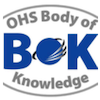Chapter 22.1: Occupational Noise
Abstract
The health impacts of noise hazards are well recognized with noise-induced hearing loss identified as a priority work-related disease for Australian workers. Although noise-related legislation focusing on reduction at source has existed for many years, provision of hearing protectors is still the predominant control strategy in many workplaces. This chapter discusses the concept of noise as a hazard and its effects on individuals. It provides a basic understanding of acoustics and the factors that impact on hearing loss and health together with the principles of noise measurement and control. It concludes with an examination of the role of the generalist OHS professional in the management of noise hazards.
Keywords: noise, hearing, hearing loss, tinnitus, audiometry, control
First year of publication: 2012
Current Version: 2024
Chapter 22.1: Occupational Noise
Table of contents
| 1 | Introduction |
| 1.1 | Definitions |
| 2 | Historical context |
| 3 | Extent of the problem |
| 4 | Understanding noise |
| 4.1 | Basic acoustics |
| 4.2 | Noise and its measurement |
| 4.3 | Noise-induced hearing loss |
| 4.4 | Audiometric testing |
| 4.5 | Ototoxicity |
| 4.6 | Social and community noise |
| 4.7 | Noise ‘stress’ |
| 4.8 | Acoustic shock |
| 4.9 | Impact of noise on human performance |
| 5 | Legislation and standards |
| 6 | Control of noise hazards |
| 6.1 | Elimination or minimization through safe design |
| 6.2 | Engineering controls |
| 6.3 | Administrative controls |
| 6.4 | Hearing protection |
| 6.5 | An occupational noise management program |
| 7 | Implications for OHS practice |
| 8 | Summary |
| Key thinkers | |
| References |
Purchase the AUDIO chapter here through AIHS
OR

Beno Groothoff MHlthSc, GDipOHS, DipMechEng, FAIOH, COH, MAAS,
Managing Director, Environmental Directions Pty Ltd
Beno has over 50 years’ experience in the fields of occupational hygiene and health and environmental control, gained both in the Netherlands and in Australia. In Brisbane he has worked in private practice, worked with the Environmental Protection Agency followed by 22 years with Workplace Health and Safety Queensland. As Managing Director of Environmental Directions Pty Ltd he provided occupational hygiene services and has written and presented workshops and two-day training courses on noise for many organisations, including Brüel & Kjær in Sydney and New Zealand, the Australian Institute of Occupational Hygiene (AIOH), and the New Zealand Occupational Hygiene Society (NZOHS). He was the course coordinator at the Queensland University of Technology (QUT) Occupational Hygiene and Toxicology course, updating and presenting lectures to post graduate and masters’ students. As Managing Director of his current business, Noise and Vibration Services, he lectures in occupational noise and vibration management to post graduate and masters’ students in the Occupational Hygiene course at the University of Queensland. He is a member of the AV-001 Committee of Standards Australia on occupational noise and vibration.
Peer Reviews
Jane Whitelaw MAppSci (Env Health), FAIOH, COH
Lecturer, Postgraduate OHS Program, University of Wollongong
Marion Burgess MSc(Acoustics), FAAS
Research Officer, Acoustics and Vibration Unit, University of NSW, Canberra
Gary Foster BSc(Chem), MSc(Acoustics), COH,
FAIOH Managing Director, Foster OHS Pty Ltd
Learning Outcomes: Physical hazards: Noise and vibration
The OHS Body of Knowledge takes a conceptual approach which enables it to be applied in different contexts and frameworks. To optimise its value for education and professional development learning outcomes have been developed for each technical chapter in the Body of Knowledge.
The learning outcomes as described give an indication of what should be the capabilities of a new graduate OHS professional in the workplace. I t is up to those developing OHS education programs, OHS professionals planning their CPD or recruiters or employers selecting or developing people for the OHS function to consider the required breadth vs. depth
Podcast
3M Science of Safety Podcast: Ep 47 Impulse noise hearing protection
Some of the most dangerous sounds that can contribute to hearing loss are some of the brief noises we hear. These sounds, known as impulse noises are very short, less than one second long, tiny bursts of noise that can be quite loud such as gunfire, an explosion, or the pop of pneumatic nail gun. Very loud impulse noises can cause both mechanical and metabolic damage to the sensory cells in the inner ear, under these conditions the proper selection, fit and use of hearing protection is critical.
Date: 2019
Presenter: Ted Madison, former Technical Services Specialist, Personal Safety Division i3M, USA
Source: https://3mscienceofsafety.libsyn.com/episode-47-impulse-noise-hearing-protection
3M Science of Safety Podcast: Ep 39: Hearing protection device ratings
When hearing protection is worn, it is important that the protective devices used have the appropriate protection rating based on your level of exposure to prevent noise-induced hearing loss. However, with different test methods used around the world to determine rating systems, ear plugs or ear muffs can have multiple ratings on them. How do you make sense of it all?
Date: 2019
Presenter: Ted Madison, former Technical Services Specialist, Personal Safety Division i3M, USA
Source: https://3mscienceofsafety.libsyn.com/episode-39-hearing-protection-device-ratings
3M Science of Safety Podcast:Ep 3: Hearing protection device selection (Part 1)
Guidance on working through the range of hearing protection options to select the most appropriate for a wide range of noise levels.
Date: 2018
Presenter: Luciana Macedo, Occupational Hygienist, Personal Safety, 3M Australia/New Zealand
Source: https://3mscienceofsafety.libsyn.com/episode-3-hearing-protector-device-selection
3M Science of Safety Podcast:Ep 4: Hearing protection device selection (Part 2)
Part 2 of guidance on working through the range of hearing protection options to select the most appropriate for a wide range of noise levels.
Date: 2018
Presenter: Luciana Macedo, Occupational Hygienist, Personal Safety, 3M Australia/New Zealand
Source: https://3mscienceofsafety.libsyn.com/episode-4-hearing-protector-device-selection
Published 2012 Chapter 22.1 Noise and Vibration
Published 2019 Chapter 22.1 Occupational Noise

